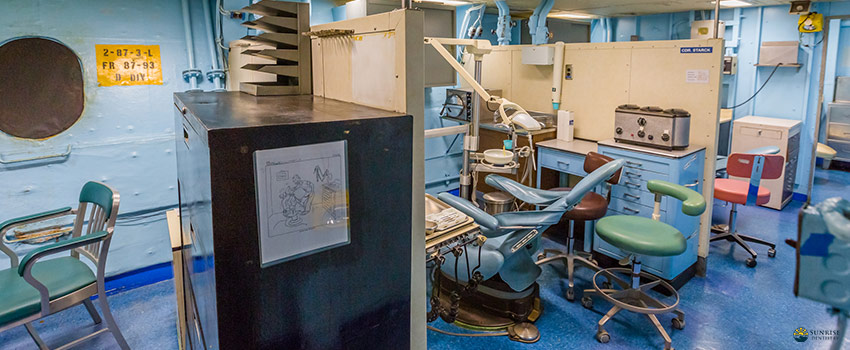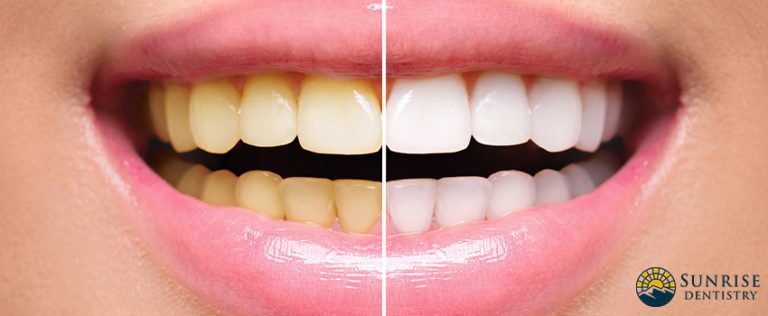Your teeth are the very least of your priorities when you’re out in the front.
History has made us aware of the many conditions and diseases soldiers faced and suffered on an insufficiently supplied frontline. Just as they suffered through shell shock, tropical diseases, and frostbite, soldiers also experienced tooth pain. It may seem insignificant, but a soldier distracted by tooth pain may very well be in danger. That’s why dental officers and other medical workers were there for them.
Army dentistry witnessed significant advancements that helped many soldiers on the battlefield and beyond.
What better time to learn and celebrate their legacy than Memorial Day? Learn more about army dentistry and dentistry in World War II with Sunrise Dentistry.
Dentistry and the Military
Early Days
It’s a lesser-known fact that Paul Revere, fondly remembered for warning the other patriots of the approaching British on horseback, was an early type of dentist. During his time, army dental hygienists and dental care for soldiers and volunteers weren’t even a thing.
World War I
As America joined the First World War, it only had 86 dentists in the military for its 200,000 soldiers; this meant one dentist had to care for 2,350 patients. But by the end of the war, 4,620 dentists were serving in the army stationed all over Europe. Seven dental officers and seven army dental hygienists were killed. Unfortunately, the end of the war also saw a reduction in the number of dentists in the military.
World War II
American military leaders discovered something very alarming while preparing for a possible war in the late 30s to early 40s: Our forces were lacking teeth, figuratively and literally. The army was too small and inadequately equipped, and most recruits had poor dental health.
The country had just come out of the Great Depression, where routine dental care was rare. Most recruits didn’t even know what a toothbrush looked like, and many had serious oral health problems like missing teeth and incapacitating toothaches.
And the planners? Some were dismissive; why should we care about cavities when we don’t have enough planes, aircraft carriers, or tanks? Some thought the problem needed to be addressed. Men won’t be effective fighters if they can’t even eat C-Rations, and the war will bring a lot of dental injuries. This led to the expansion of the Dental Division of the Office of the Surgeon General, or the Dental Service.
Some Facts About Dentistry in World War II
1. Dentists also served at the front lines.
Dental officers traveled with a company and stayed near the front lines, far enough so that they would not be involved in the fighting but close enough to attend to any emergency.
Aside from the task of staying alive, they needed to be patient and calm enough to perform emergency procedures amidst gunfire and explosions.
2. Only one WWII dental officer was awarded a Medal of Honor.
Of the countless many who received a Medal of Honor, only three are dentists. Ben Salomon is the only one of the three to serve in WWII. In 1940, he entered the Army and enlisted as a private in the infantry. He excelled at using the pistol and rifle and spent his free time giving his fellow soliders free dental care.
Salomon and his regiment went to Saipan in June 1944, where he saw his first combat. The extremely high number of casualties forced him to work close to the frontline as a surgeon. A fierce Japanese attack stopped him from saving other wounded soldiers. He successfully killed some of the Japanese soldiers who entered his first aid tent, but he knew that was not the end of it.
He ordered the evacuation of the injured and stayed to hold off enemy forces. The Army found him slumped on a machine gun with his finger still on the trigger when they returned the next day. Salomon fought on despite 76 bullet wounds and 24 bayonet wounds until he was outnumbered. He killed 96 soldiers before he died.
Salomon was considered for a Medal of Honor but was rejected; the Geneva Convention states that medical officers were not permitted to carry weapons against the enemy.
Fortunately, a researcher found a loophole; while the Geneva Convention prohibits state medical personnel from going on the offensive against an opponent, they were allowed to act in self-defense to protect the injured.
Ben Salomon was posthumously awarded the Medal of Honor in 2001.
3. Sometimes, dentists perform procedures without anesthesia.
Dentistry in World War II was never easy; dentists had to treat their patients in the most unwelcome places. The war also caused shortages in food, materials, and medical supplies like anesthesia. This often meant soldiers had to undergo dental work in a hurry, without anesthesia.
4. World War II saw a rise in antibiotics and sulfa drugs in dentistry.
World War II was an extremely deadly war, but it was more survivable than wars before. 50% of injured soldiers survived their injuries; World War I saw a 4% survival rate. Many survivors owe their recovery to antibiotics, a medical breakthrough that helped their bodies fight infections. And just as they were increasingly used in treating wounds and diseases, antibiotics were also introduced to army dentistry to fight oral infections.
5. There were 18,000 dentists on military service during World War II.
Eighteen thousand dentists joined the war effort, and they were all swamped with work. They provided top-notch dental care, despite soldiers being afraid of visiting them. By the end of WW2, dentists had performed over 16 million extractions, nearly 600,000 full dentures, and over 2 million partial dentures. WW2 dentists also used pedal-driven drills to perform nearly 70 million restorations. All of these procedures were free and helped so many who suffered from years of neglecting their oral health.
Of the 18,000 dentists on military service during WWII, 20 were killed in action; 90 died due to other causes.
6. WW2 dentists had a hand in using resin for glass eyes.
Army dentists also claimed victories outside of the mouth. Many men lost their eyes in combat, leading to a shortage of glass eyes. Dentists perfected using synthetic resin to replace glass, which was soon adopted by the army for routine use.
Protect Your Oral Health With Sunrise Dentistry
Our dentist in Pagosa Springs is always ready to help you win the war against cavities and other oral health problems. We provide a vast range of services to keep your teeth and gums healthy. Feel free to call us and set an appointment today.





